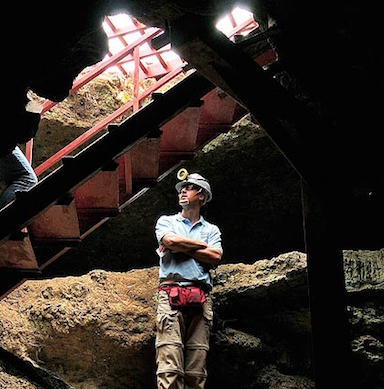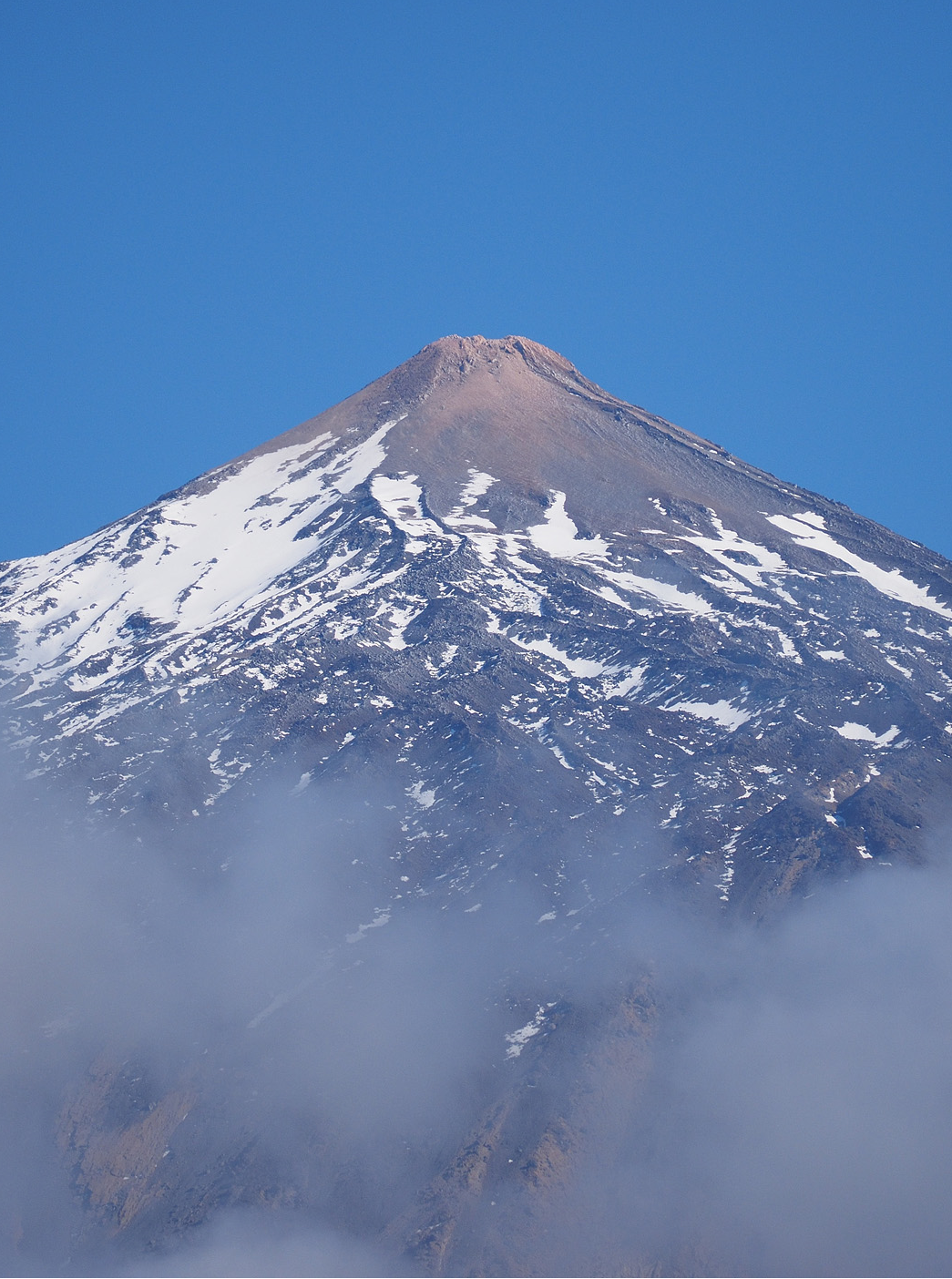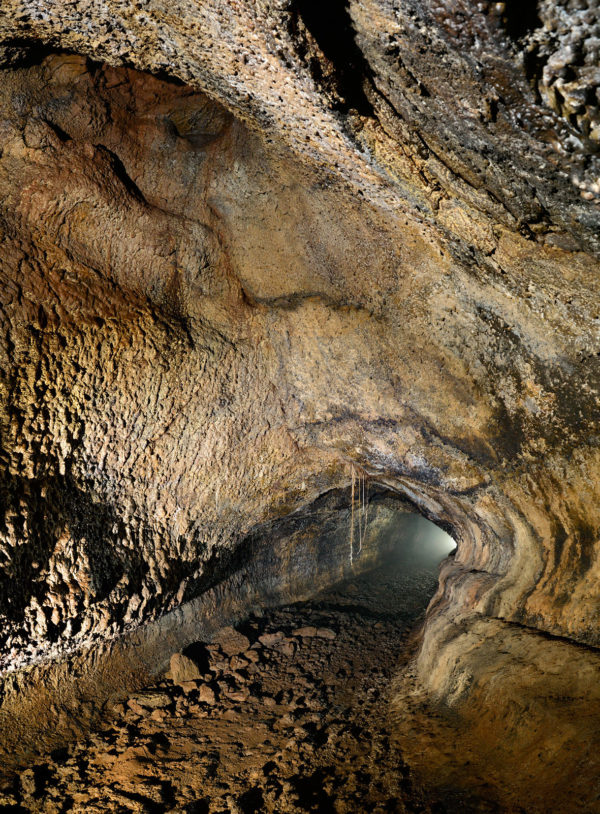The cave
Protection
Only three lava tubes in the Canary Islands have specific protection: two in Lanzarote (Jameos del Agua and la Cueva de los Naturalistas) and another in La Palma (Tubo del Todoque). Moreover, a large number of cavities fall within the scope of Protected Natural Areas. But this protection has room for improvement because the fact that they have not been inventoried means that they are occasionally exposed to activities that affect them, such as the building of trails, or simply that direct conservation measures have not been put in place.
In 2014 the Cueva del Viento Natural Resource Management Plan (PORN) was adapted to European legislation for Special Areas of Conservation.

description
Cueva del Viento is a volcanic cavity located in the district of Icod de los Vinos which bears the same name. It was formed 27,000 years ago in basaltic lavas from the first eruptive phase of the Pico Viejo volcano, next to Mount Teide (Tenerife, Canary Islands).
This lava tube, the name of which (“Cave of the Wind”) comes from the powerful draughts that flow through it, is the fifth longest in the world (18 kilometres mapped to date), behind the four that are found on the largest island of the Hawaii archipelago (United States). It is a huge labyrinthine network of underground passages, with many unexplored branches that will undoubtedly add to its overall length in the future.
Cueva del Viento is also known for its unique geomorphology: its network of galleries is arranged in three superimposed levels, a phenomenon that has not been recorded in any other place in the world. It also has a wide variety of structures of primary origin such as lava stalactites, lava cascades, side terraces and lava lakes, among others, as well as concretions of varying composition (calcium carbonate and other salts).
Of greatest interest to biology is the subterranean fauna found in this intricate volcanic cave, which is a constant source of new discoveries. The cave is home to a total of 190 known species, most of which are invertebrates. Of these, 44 are troglobites: animals adapted to underground environments. Of these species condemned to live in darkness, 15 are new to science, such as the eyeless cockroach Loboptera subterranea or the carabidae Wolltinerfia martini and Wolltinerfia tenerifae.
The fossil remains of extinct vertebrates such as the giant rat and giant lizard have been found in the cave, as well as other skeletal remains of species that have disappeared from Tenerife, such as the rook and the houbara bustard.
In order to guarantee its conservation, in 1998 the Canary Islands Government adopted a Management Plan for the Natural Resources of Cueva del Viento, prior to it being declared a Special Nature Reserve. The purpose of the Plan was to curb actions that damage the cave, such as building, soil disturbance or dumping. It also introduced improvements, such as sewers to avoid sewage spills and support for scientific research and environmental education.


History

Cueva del Viento (Cave of the Wind) was already known to the Guanches more than 2,000 years ago: burial remains have been found in the cave. But no written record exists until 1776. That year, the Bethencourt de Castro brothers and Afonso Molina mentioned it in their description of the San Marcos Cave. The main entrance to the cave is located in the neighbourhood of the same name, Cueva del Viento, which would suggest that it had already been known to the locals for a long time.
The history of recent discoveries began in 1969 with deep exploration and the publication in 1970 of the first map, of just over 6km, by the La Guancha caving section of the Montañero de Tenerife mountaineering group. In 1973, cavers from the Shepton Mallet Caving Club discovered what was later to be named, in their honour, the “Pozo de los Ingleses” (“Englishmen’s Pit”), which connects the third level with a large gallery of about 4 kilometres in length on the lowest level. Thanks to this important find, the cavity grew considerably in size, to an overall length of 10 kilometres.
Years later the University of La Laguna Department of Zoology began to conduct biological studies, and discovered a great variety of cave fauna. In addition, the Benisahare Tenerife Caving Group discovered and mapped new galleries.
In 1989, this same group connected Cueva del Viento with the Sobrado cave through narrow passages, making the total length of the complex 14 kilometres. This discovery enhanced the status of the great volcanic complex, and plans were made to remap all the branches.
In 1994 works began to prepare the lava tube for the public. These were coordinated by the Museum of Natural Sciences, part of the Independent Board of Museums and Centres of the Tenerife Island Council. One of their first actions was to clear away the rubble from the mouth of one of the tube branches. This excavation exposed a 17-metre-deep chasm, with a lava cascade, connecting to another level of the lava tube, with a length of 2.35 kilometres.
These findings give us just a hint of the rich heritage and great geological significance of this major underground complex, which is certain to hold many more surprises in store.
Caving in the Canaries is a relatively new activity that began in the late sixties and Cueva del Viento has written memorable pages of this burgeoning history. The pioneers were members of the Montañero de Tenerife Group, followed by the La Guancha Volcano Cave Exploration Section.
And so the study of this cavity gave rise to volcano caving on the Canary Islands. The two years that the exploration and mapping of the Icod tube lasted was the ideal learning environment for many of the island’s future vulcanospeleologists.
In 1978, the Benisahare Tenerife Caving Group was born. It was the first group specifically dedicated to caving in the Canaries and took over exploration of Cueva del Viento. Their work on vulcanospeleology has been presented at National and International Speleology Conferences, widely promoting knowledge of this wonderful sport/science in the Canary Islands.
Thanks to their work, the Canary Islands School of Speleology was born alongside new groups and sections of this specialised discipline in the rest of the archipelago.
Biology

Cueva del Viento is home to significant biological treasures and is a unique place for studying animals that are now locally extinct on the island of Tenerife.
The underground environment is characterised by total darkness, very high humidity levels, a constant temperature and almost absolute stillness. No light, no green plants and no organic matter, so what little food there is has to come from outside. Roots that penetrate from above through cracks, animals that accidentally enter the cave or sediment carried by the water that percolates through the earth.
In order to survive in these conditions cave species have had to evolve and produce adaptations that differentiate them from their aboveground relatives. These modifications arise as certain organs become unnecessary for the organism and it adapts to expend less energy in this dark world. An example is reproduction in cave species, which produce fewer eggs but provide them with greater reserves to ensure the survival of the young in an environment with so little food.
The study of these adaptations has its own particular history in Cueva del Viento. Already, in the 1970s, experts were theorising the existence of troglobite insects (cave-dwelling animals), although zoologists had never visited the cave. Biological studies were first carried out thanks to the discovery of subfossil bones of the now extinct giant lizard, Gallotia goliath, and giant rat, Canariomys bravoi.
This finding was followed by the discovery of various troglobitic species that were hitherto unknown in the Canary Islands, including the eyeless cockroach Loboptera subterranea and the ground beetles Wolltinerfia martini and Wolltinerfia tenerifae, which were new to science. This phenomenon is common in caves of this type, and the animals that have adapted to life in them are unable to survive outside of that environment.
In 1982, a group of biologists from the University of La Laguna conducted a thorough study of the cave. They found that saprophages (or detritivores, meaning they feed on detritus) were by far the most abundant creatures. This study was carried out only on the highest level, specifically in the Belén, Breveritas Superior, Breveritas Inferior and Breveritas Profunda galleries. They discovered 37 animal species, of which 9 were troglobites. In 1987 an extremely thorough, detailed and rigorous new study was carried out, leading to the discovery of more species, bringing the total to 43.
In this type of cave animals live by the maxim “adapt or die” and quite incredible changes come about, such as body discoloration or vision loss. In some cases, such as that of the woodlouse Venezillo tenerifensis, pigmentation disappears altogether, as there is no need for it without sunlight.
As it is not possible to see in pitch black darkness, sometimes their eyes atrophy and even disappear entirely. This is the case of a type of cave cockroach (Loboptera troglobia) which has lost its sight; moreover, its skin is sensitive to light, so it avoids lit areas.
Other animals develop other senses to compensate their blindness. This is the case of the beetle Domene vulcanica whose long antennae gives it a heightened sense of smell and a delicate sense of touch that make up for its lack of eyesight, and its streamlined legs and body help it on its endless march in search of scarce food. Moreover, because food is so scarce in cave environments, these animals can fast for months thanks to their slow metabolism, as is the case of the cave-dwelling spider Canarionesticus quadridentatus.
Species for which subfossils have been found in Cueva del Viento include: the giant lizard, Gallotia goliath, and the giant rat, Canariomys bravoi, both of which are exclusive to Tenerife; the long-legged bunting (Emberiza alcoveri), only ever found in Cueva del Viento; the extinct Canary Islands quail (Coturnix gomerae), which has also been found on La Gomera; and the red-billed chough (Pyrrhocorax pyrrhocorax) which currently only lives on La Palma.
Vegetation occupies three sections: the external zone, with vascular plants and some ferns and lichens; the entrance zone, which begins at that point the rain does not directly reach, but does receives light and contains mainly mosses and lichens; and the transition zone, which receives indirect light, where cyanobacteria and lichens are found.
Geology
With regard to the process that causes this type of lava tube, the structures are typical of certain types of basaltic flow, where constant heat inside the flow pushes it forwards. Heat conservation is guaranteed by a continuous crust that thermally insulates the inner lava and within which conduits form. After the eruption, the lava continues to flow through these conduits until they empty. Cueva del Viento contains three levels of conduit produced by successive eruptive stages which created overlapping flows within which the galleries formed.
27,000 years ago, during the basaltic emissions of the first eruptive phase of Pico Viejo, the great lava channels were formed and these became two spacious galleries: the Los Ingleses and Sobrado Inferior galleries. After these solidified, another flow covered the surface, still devoid of soil or vegetation. A third level of flows created a maze of conduits that frequently interconnect with the Sobrado and Cueva del Viento caves.

